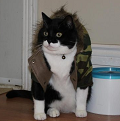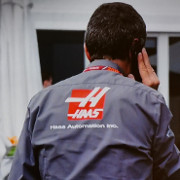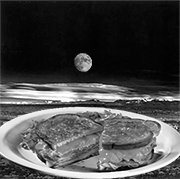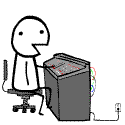|
Dr. Cool posted:Hey guys, I'm going on my first shoot in the snow next week to Whistler. I'm planning on shooting color, but as someone who hasn't been to real snow in a decade, I have no idea what to expect. About how fast should my film be to get nice handheld shots? The usual rule for handheld shots is shutter speeds 1/the focal length of the lens. With a nifty-fifty (50mm), 1/60 is pretty much guaranteed to keep the motion shake out of your shots; hand-holding at 1/30 for normal and wide lenses is typically not a problem, either. With so much light, you'll be able to stop down pretty far, like f/11 or f/16 and still get fast shutter speeds. Obviously your film will determine how fast and how far you can stop down. If it's clear and sunny, iso 100 or even slower would be just fine. Overcast, I'd say you're still probably OK with 100, but you'd definately be able to freeze motion (your buddy zipping past, 1/250 shutter speed should be good) with iso 400. If you're unsure in the morning before the first run, load 400, or 200 if that's what you've got. If you've got a roll of really slow film - like Fuji Velvia 50 or something like that - you'll have an opportunity to use it for some action shots as well as landscapes if the weather comes up clear. If you shoot aperture priority, don't forget to set EV a little slower (i.e. negative, maybe 1/2, 2/3, or 1) to compensate for the snow - this will result in some blown highlights on the snow, but, it's snow, it's supposed to look like that (i.e. bright bright white). What camera are we talking about here?
|
|
|
|

|
| # ? May 28, 2024 00:03 |
|
the posted:I'm terrified of shooting in manual on my SLR because I can't preview the image to make sure it will be exposed properly. I'm terrified of NOT shooting manual because I'm not sure it will be exposed properly.
|
|
|
|
Mightaswell posted:I'm terrified of NOT shooting manual because I'm not sure it will be exposed properly. I've been looking at something like this as reference, but I guess it comes with experience that you can just look at an environment and know how to properly expose the shot?
|
|
|
|
the posted:I've been looking at something like this as reference, but I guess it comes with experience that you can just look at an environment and know how to properly expose the shot? It's like half and half. If it's not sunny 16 (or hazy/cloudy 11) I'll usually take a reading from my film camera's meter as a baseline. Then, thanks to that chart and others like it, use my own judgement on what to change based on the scene. I recently got a Canon A-1, which has a program mode, and it never picks what I want. So on that camera I'm usually on Av. On my Pentax MX though, I have no P, Tv or Av mode, so I'm pretty used to thinking fast when it comes to exposure.
|
|
|
|
Mightaswell posted:I'll usually take a reading from my film camera's meter as a baseline. What do you mean by this?
|
|
|
|
ExecuDork posted:helpful Thanks so much! I'll probably be shooting with my Bessa R2, so I think I'll use Ektachrome since Mannequin makes it look so awesome and my camera works best with 100 speed film. I think I'll just underexpose a stop or two when there's a bunch of snow in the frame.
|
|
|
|
the posted:I've been looking at something like this as reference, but I guess it comes with experience that you can just look at an environment and know how to properly expose the shot?
|
|
|
|
alkanphel posted:I mainly use the sunny-16 rule outdoors and just compensate if I'm shooting a overly light or dark subject. I'm guessing your camera has no meter at all? If so you might want to get a lightmeter. According to this it has a "6-segment evaluative (matrix) meter." I just have no idea what that means or how to use it.
|
|
|
|
the posted:What do you mean by this? I have a light meter built into my viewfinder and my camera went out of production in 1973 so I'm assuming your camera has something similar? I've noticed that mine has a tendency to overexpose everything when the light meter is set to the proper exposure. I don't really have any choice but to shoot manual since I don't have any other option, but even after putting just three rolls through the camera, I'm starting to understand how the camera behaves in different light conditions.
|
|
|
|
the posted:According to this it has a "6-segment evaluative (matrix) meter." I just have no idea what that means or how to use it. In both cases, sometimes you might need to do exposure compensation if you're shooting very light subjects (snow) or dark subjects (black cat). To make things better, use a film with wide latitude like Portra 400.
|
|
|
|
I guess I don't know what you're saying by "the settings the evaluative meter gives." How do I find that out?
|
|
|
|
the posted:I guess I don't know what you're saying by "the settings the evaluative meter gives." How do I find that out?
|
|
|
|
I finally had a couple of rolls of Fuji 100 iso consumer-grade E-6 film developed, and I love them. I've got a few rolls of Velvia 50 I'm now very excited to shoot. I've been pretty happy with Fuji lately, the C-41 I developed myself worked well on the couple of rolls of Fuji 200 I had. But, there must be other good slide film out there - any recommendations for E-6 from Kodak or somebody else? Just because this kind of sky is a pretty common occurrence around here, and the Provia handled those clouds nicely:  Fuji Provia 100F 1 036 by Execudork, on Flickr
|
|
|
|
the posted:What do you mean by this? You know the camera still meters in manual mode, right?
|
|
|
|
FasterThanLight posted:You know the camera still meters in manual mode, right? Exactly. Just for the purposes of discussion, here would be some of my thoughts if I had a camera with a meter (which I do, but I'm just saying...) I hold the camera up to my subject and look through the viewfinder. I know I want a shallow depth of field, so I go for, I dunno, f/2.8 or so. In the viewfinder I see this: -[.......|||||||]+ Now, since my little meter indicator is leaning way towards the overexposed (+) side, I know that my subject is going to be overexposed with my current settings. If I bump my shutter speed down from 1/60 to 1/250 or so, the meter looks like this: -[......|......]+ SO, now I know that my baseline meter reading is f/2.8 at 1/125. This would be, I dunno, a slightly overcast day or something. Now, based on my baseline meter reading, and based on the fact that I'm shooting, say, a white car, I can adjust accordingly. Since your camera is using matrix-metering, which means it takes an average reading of the entire shot (as opposed to one spot), you'll have to think about how your shot is weighted, light-wise. If I take my shot at the current settings, the stuff around the car may be averagely exposed, but my car will be overblown, so I will stop down two stops (either to 1/1000s or f/5.6). I'll choose to do f/5.6 at 1/250 since I just changed my mind about the depth of field and f/2.8 will probably not get the entire car in focus. This whole post is basically talking out of my (semi-educated) rear end. The theory is all there, even though I'm making up the situation. Hopefully though, you see what I mean? If you want to understand metering a scene correctly and getting a perfect shot each time, I'd suggest Understanding Exposure or [/i]The Negative[/i] as books to start with. If you don't know every part of your camera and how each part interacts with each other part, read The Camera (by Ansel Adams, just like The Negative). I really hope I'm not being patronizing; I'm genuinely trying to be helpful. I don't know how much you do or don't know, but you see mto be a bit confused by metering, so I thought I'd throw some wisdom out there 
|
|
|
|
But true ballers use the zone system anyway, look that poo poo up
|
|
|
|
QPZIL posted:But true ballers use the zone system anyway, look that poo poo up Yeah, I "get" zone system in theory, but the one time I tried to apply it in real life, my brain melted.
|
|
|
|
QPZIL posted:But true ballers use the zone system anyway, look that poo poo up This. Zone system is pretty much the only way I meter when I am shooting black and white. Mightaswell posted:Yeah, I "get" zone system in theory, but the one time I tried to apply it in real life, my brain melted. It's actually surprisingly simple. Meter off the darkest thing you want in your picture. Your meter will be telling you the exposure to make that middle grey. So drop it a stop or two so that dark thing will actually be a dark thing. And then your blacks will be where you want them and you can burn in any skies that may be blown out. Or compensate in development, but that is tricky shooting 35 or 120. Demon_Corsair fucked around with this message at 15:46 on Feb 15, 2012 |
|
|
|
FasterThanLight posted:You know the camera still meters in manual mode, right? According to the manual the EOS 620/650 doesn't actually have any exposure +/- info in the viewfinder, just aperture and shutter speed.
|
|
|
|
Beastruction posted:According to the manual the EOS 620/650 doesn't actually have any exposure +/- info in the viewfinder, just aperture and shutter speed. Yeah, but even that is a "reading". Like for example last night, my a-1 told me f2.8 @ 1/30. But I was hand holding, so In my head I turned that into roughly f1.4 @ 125.
|
|
|
|
Can you guys go into a little bit more detail on this? The -/+ explanation was really helpful, but it looks like I don't see that on my camera. For example, right now I'm shooting on ISO 400 film, and I have my camera set to f/1.8 and 1/125 shutter speed. When I look through the lens I see: M 125 1.8 Nothing indicating I'm about to overexpose the shot, which I believe I am since it's an extremely bright sunny day and I'm pointing out the window.
|
|
|
the posted:Can you guys go into a little bit more detail on this? The -/+ explanation was really helpful, but it looks like I don't see that on my camera. In that case, switch it to Av or Tv mode and see what exposure it suggests, then switch back to M mode and choose something based on the suggestion.
|
|
|
|
|
the posted:Can you guys go into a little bit more detail on this? The -/+ explanation was really helpful, but it looks like I don't see that on my camera. Can you just read your manual and come back to us? Holy poo poo.
|
|
|
|
It should be stated over and over that Canon user manuals are really good. Not only do they describe the camera in detail, but they go into the how and why usually as well.
|
|
|
|
the posted:Can you guys go into a little bit more detail on this? The -/+ explanation was really helpful, but it looks like I don't see that on my camera. You may actually be retarded. In the Canon thread you referenced having read the manual, so I know you have seen this text: quote:[SETTING] MrBlandAverage fucked around with this message at 21:24 on Feb 15, 2012 |
|
|
|
the posted:Can you guys go into a little bit more detail on this? The -/+ explanation was really helpful, but it looks like I don't see that on my camera. Sounds like you don't have a visible meter in your viewfinder. I would be looking into another body or buying an external light meter. Or just shoot in Aperture or Shutter Priority. Edit: Never mind. I see that it does have a sort of visible meter. I'd still get a different camera, life's too short to deal with a crappy design like that IMHO. Edit2: Does it only allow you to adjust the aperture while in Manual mode? Because OP means "Open the aperture" and the CL means "Close the aperture". It's like manual mode for dummies or something. echobucket fucked around with this message at 21:17 on Feb 15, 2012 |
|
|
|
echobucket posted:Sounds like you don't have a visible meter in your viewfinder. I would be looking into another body or buying an external light meter. Or just shoot in Aperture or Shutter Priority. the seems to think that the camera is metering when you hold it up to your face without pressing any buttons. edit: he should learn how to use a camera before buying another one. MrBlandAverage fucked around with this message at 21:17 on Feb 15, 2012 |
|
|
|
MrBlandAverage posted:the seems to think that the camera is metering when you hold it up to your face without pressing any buttons. the seems to think a lot of stupid things about photography
|
|
|
|
the posted:Can you guys go into a little bit more detail on this? The -/+ explanation was really helpful, but it looks like I don't see that on my camera. Read the manual. Also anyone that told you putting a camera to your face makes instant art, lied to you.
|
|
|
|
Beastruction posted:According to the manual the EOS 620/650 doesn't actually have any exposure +/- info in the viewfinder, just aperture and shutter speed.
|
|
|
|
MrBlandAverage posted:the seems to think that the camera is metering when you hold it up to your face without pressing any buttons. As you can see I'm making an effort to do that. Thanks for pointing out that spot in the manual, I must have missed that the first read through!
|
|
|
|
the posted:As you can see I'm making an effort to do that. Thanks for pointing out that spot in the manual, I must have missed that the first read through! Have you considered digital? It seems like instant feedback is better for someone of the "can't pay attention" generation.
|
|
|
|
the posted:As you can see I'm making an effort to do that. Thanks for pointing out that spot in the manual, I must have missed that the first read through! Is this what you see when you put the viewfinder to your eye? 
|
|
|
|
lmao The last time we talked about digital I got a thread gassed. I like working with film, despite my learning difficulties. (USER WAS PUT ON PROBATION FOR THIS POST)
|
|
|
|
the posted:lmao And, judging by that thread, it seems like you're working with film for the wrong reasons.
|
|
|
|
the posted:lmao You don't seem to be doing much better in here. If you are set on trying film pick up a modern Canon EOS film SLR. All of the fun features of digital bodies, and its still film. Then read the loving manual. Repeatedly, since you seem to have issues with reading comprehension.
|
|
|
|
the posted:lmao Start with a disposable Kodak iso 800 36exp camera and go from there. Just push one button. Cant be hard, right? Pro-Tip: Read manuals. READ MANUALS. Better yet, go by a Rebel 2000. Its darn near idiot proof. Maybe not THE proof, but idiot proof.
|
|
|
|
When I was starting out with film, my dad made me keep a log book of all the settings I used for all my frames, as well as a brief description of the lighting situation. I was finally starting to get the feel for being able to set a basic idea when I stopped keeping up with photography to pursue other hobbies. If you're starting out with film I highly recommend keeping such a log since EXIF data doesn't exist on film (at least to my limited knowledge it doesn't). On my manual film SLR, there's a needle that titters around a giant C. As long as the needle is on the C, I get a proper exposure. It's so idiot proof and I love the system so much that I even drew up a mock up diagram of the viewfinder.  Only down side is that when it's dark the meter is basically invisible. The way he describes it, it sounds like Canon uses some really confusing weird metering system. Aren't most metering systems pretty intuitive to where you shouldn't really need to read a manual?
|
|
|
|
Bioshuffle posted:Aren't most metering systems pretty intuitive to where you shouldn't really need to read a manual? Yes. Yes they are.
|
|
|
|

|
| # ? May 28, 2024 00:03 |
|
I think I really want to get some prints made, but to get this image, I had to touch it up quite a bit in processing as it's slightly overexposed when it's straight out of the camera. If I take this to a photo lab and request a print big enough for framing, will they do all the corrections to get the best image possible? I've been thinking about just going to Walgreens but I think it would be worth the five minutes extra drive to go to a photo lab for my prints. I'm even thinking about going to a photo lab to get my film developed and scanned because I am sick and tired of receiving JPEG images in the CD instead of TIFF. What I want  The original Bioshuffle fucked around with this message at 23:12 on Feb 15, 2012 |
|
|






















